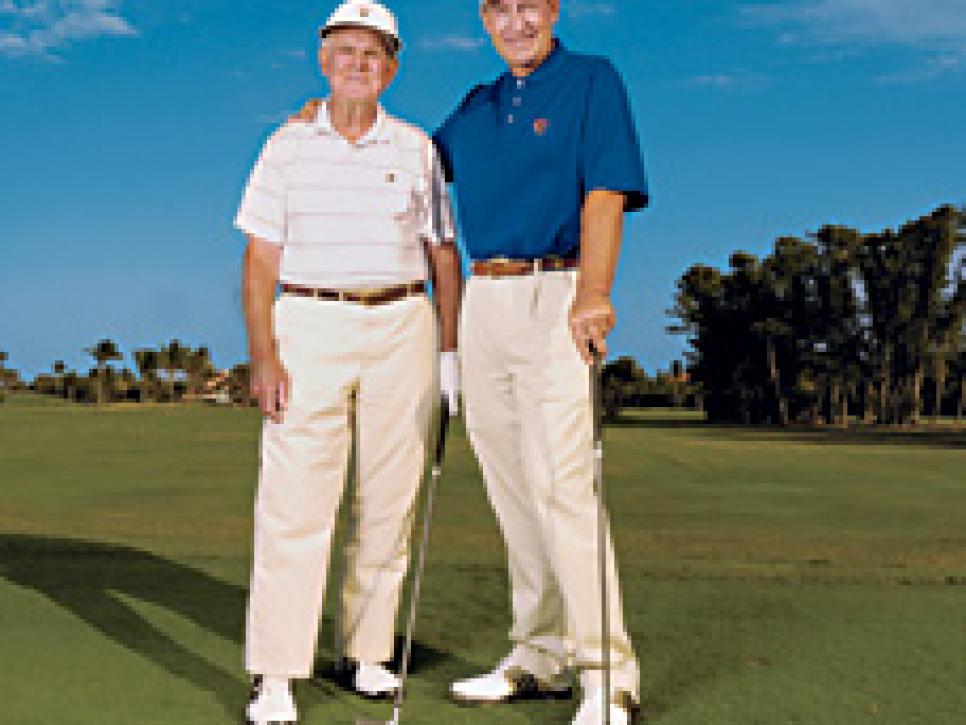The Challenge Never Ends

Jim Hand (far left) keeps his game fit with Bob Ford; Kyle Lograsso, 4, overcame the loss of an eye.
Jim Hand is the kind of golfer we all aspire to be. First, he's a gentleman, and anyone who has ever met him is struck by his immense good nature. He even has the temperate habit of humming constantly, which must be the key to his syrupy swing.
He has always had the ability to shoot low scores without ever looking like he hit an exceptionally memorable shot. USGA Executive Director David Fay recalls playing a round with him at Ekwanok in Vermont, where Jim shot an effortless 68, missing makable birdie putts on the 16th, 17th and 18th holes. "Nothing flashy, just a display of efficient golf at its best," Fay says. "Upon completing the round, I expressed joy at having been a witness. Jim, in his understated way, lamented not having made a couple of those birdies, as it would have been nice to better his age by 10 shots! There it is: At 76, he shot 68 on one of America's fine courses."
Jim's handicap has slipped upward a bit as age-shooting has become easier. No surprise, I guess, at 90 -- the oldest living USGA president and, many would say, the best.
He met his wife, Gussie, when they served in England during World War II. She didn't play golf; he didn't ski. They took up each other's sport. She brought him to the top of a mountain in the Alps, when he had never skied before. "See you later," she said taking off. Six hours later, he scrambled to the bottom.
Their marriage lasted another 60 years. She became the better golfer, even playing in the U.S. Women's Open, and they won the Westchester husband-wife championship nine times. He remembers facing one couple in a final, when the husband showed up separately from his wife in a taxicab. The two argued animatedly in the parking lot, never making it to the first tee before conceding the match and exiting in the same cars that brought them.
When Gussie became ill, Jim set the clubs aside. "She took care of everything while I was away," he said. "Now it's my turn." Gussie died in 2005, and gradually Jim took up the game again. He bought a new set of clubs, took a permanent spot on the range and began taking lessons from his Seminole pro, Bob Ford. Entering his 10th decade, Jim's determined to make over his swing and get better.
A couple of days after posing for the pictures for our case study, he was involved in a car accident that fractured his pelvis. The rehab will take a couple of months, but he's pointing toward a return to the course this summer. And working on the swing changes Bob Ford has given him.